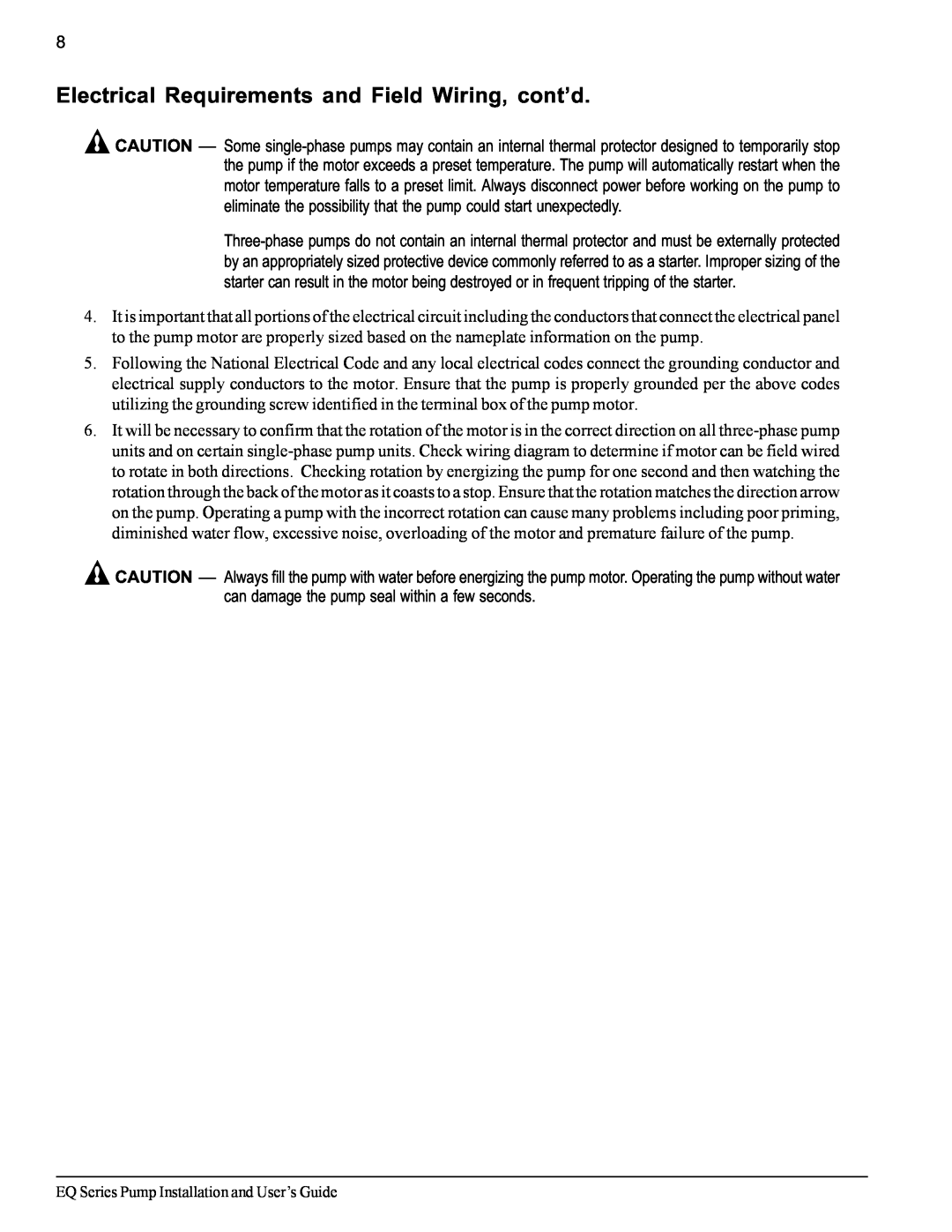
8
Electrical Requirements and Field Wiring, cont’d.
 CAUTION — Some single-phase pumps may contain an internal thermal protector designed to temporarily stop the pump if the motor exceeds a preset temperature. The pump will automatically restart when the motor temperature falls to a preset limit. Always disconnect power before working on the pump to eliminate the possibility that the pump could start unexpectedly.
CAUTION — Some single-phase pumps may contain an internal thermal protector designed to temporarily stop the pump if the motor exceeds a preset temperature. The pump will automatically restart when the motor temperature falls to a preset limit. Always disconnect power before working on the pump to eliminate the possibility that the pump could start unexpectedly.
Three-phase pumps do not contain an internal thermal protector and must be externally protected by an appropriately sized protective device commonly referred to as a starter. Improper sizing of the starter can result in the motor being destroyed or in frequent tripping of the starter.
4.It is important that all portions of the electrical circuit including the conductors that connect the electrical panel to the pump motor are properly sized based on the nameplate information on the pump.
5.Following the National Electrical Code and any local electrical codes connect the grounding conductor and electrical supply conductors to the motor. Ensure that the pump is properly grounded per the above codes utilizing the grounding screw identified in the terminal box of the pump motor.
6.It will be necessary to confirm that the rotation of the motor is in the correct direction on all three-phase pump units and on certain single-phase pump units. Check wiring diagram to determine if motor can be field wired to rotate in both directions. Checking rotation by energizing the pump for one second and then watching the rotation through the back of the motor as it coasts to a stop. Ensure that the rotation matches the direction arrow on the pump. Operating a pump with the incorrect rotation can cause many problems including poor priming, diminished water flow, excessive noise, overloading of the motor and premature failure of the pump.
 CAUTION — Always fill the pump with water before energizing the pump motor. Operating the pump without water can damage the pump seal within a few seconds.
CAUTION — Always fill the pump with water before energizing the pump motor. Operating the pump without water can damage the pump seal within a few seconds.
EQ Series Pump Installation and User’s Guide
![]() CAUTION — Some
CAUTION — Some ![]() CAUTION — Always fill the pump with water before energizing the pump motor. Operating the pump without water can damage the pump seal within a few seconds.
CAUTION — Always fill the pump with water before energizing the pump motor. Operating the pump without water can damage the pump seal within a few seconds.